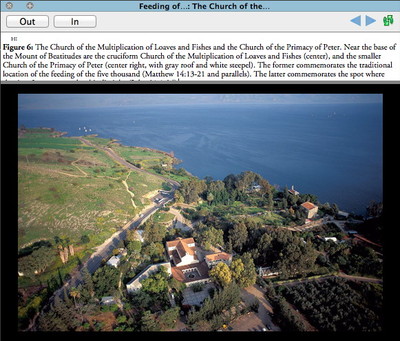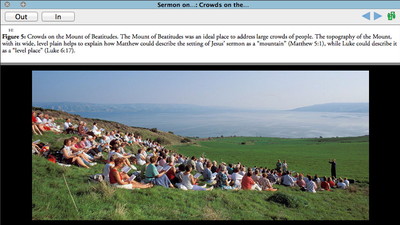In order to make sure the Bible Lands PhotoGuide had adequate coverage of each biblical location, we supplemented our own photos with the work of some professional photographers. Not surprisingly, these photos are some of the most beautiful in the PhotoGuide. Yet as we went through their catalogues looking for photos, we found that not every photo was suitable for the PhotoGuide. This is because the PhotoGuide is focused on teaching you about the biblical and historical significance of a site rather than just offering you an attractive image.
While it is certainly possible for an attractive image to be useful for teaching, we were surprised how often the artistic shot was not necessarily the most illustrative shot. You see, an artist may look at a site and choose an angle which offers the most dramatic composition, while a different angle might offer a better view of the site’s most significant features. For example, a photographer might be drawn to a site’s beautiful Byzantine-era ruins while ignoring the much less impressive remains which can tell you something about the site during the biblical period. Thus, the best postcard image is not necessarily the best image for a dictionary of biblical locations.
We were therefore very selective when it came to licensing photos from other photographers. If the photo didn’t help us explain something important about the site, we typically chose not to use it, even if it happened to be stunning from a purely aesthetic standpoint.
One of the articles which offers a particularly good mix of photos which are both aesthetically striking and instructionally helpful is the one on “Heptapegon” or “Tabgha.” Heptapegon is the ancient name of the site, meaning “seven springs,” while Tabgha is the modern name. It’s a site at the northwest corner of the Sea of Galilee where tradition locates Jesus’ feeding of the five thousand, sermon on the mount, and reinstatement of Peter. Three separate churches commemorate the three events, and the relatively undeveloped setting makes it easy to envision them happening there.
In addition to our own photographs, we licensed some beautiful shots from an Israeli photographer named Hanan Isachar, including this aerial shot showing the Church of the Multiplication of Loaves and Fishes (center) and the Church of the Primacy of Peter (right). The PhotoGuide article then moves from this orienting photo to detail photos of each church.
This same photographer also captured this shot of a crowd seated on the Mount of Beatitudes. Their modern dress aside, this shot really gives you a feel for what it would have been like to hear Jesus deliver a sermon here.
Many dictionaries which teach you about a site settle for one or two token photos which do not necessarily add much to your understanding of that site. The PhotoGuide seeks to use informative articles, illustrative photos, and detailed captions to give you a vivid understanding of a site’s biblical and historical significance. If a photo didn’t further that goal, it simply didn’t make the cut.



